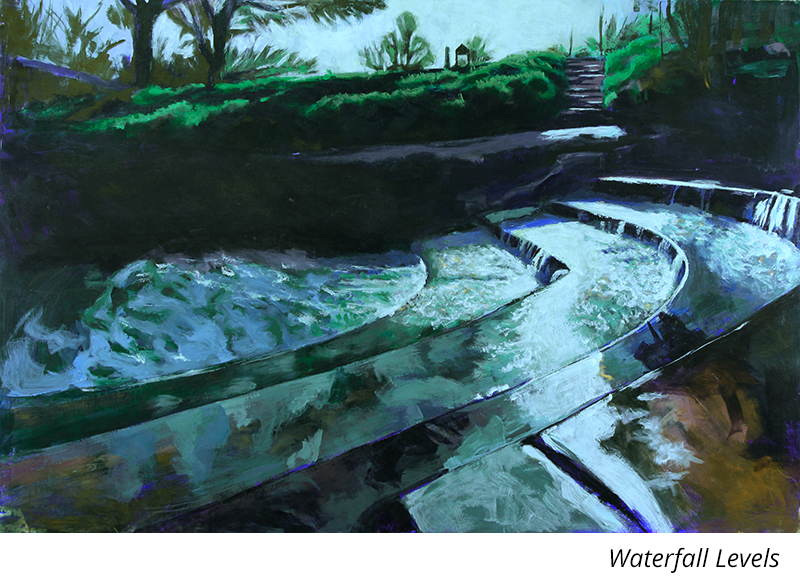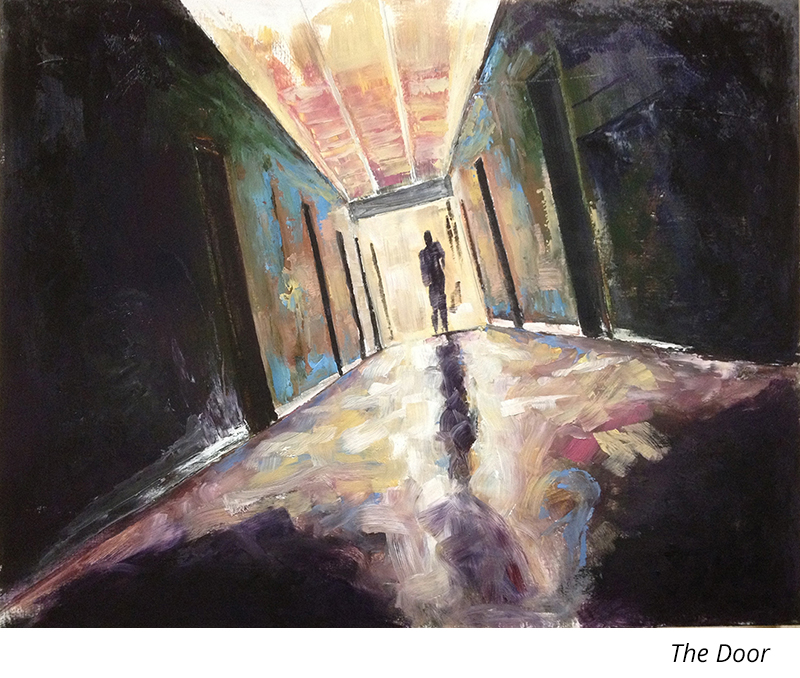
Tell a little bit about how you first got into creating art.
I have been active in art all my life. Both of my parents were art teachers. My mother had me do sample art education lessons when she prepared to teach her college art education classes. All through my childhood, I would go to Mom and Dad’s classrooms and make art while my parents were working on other things. Making art just seemed natural to me, so when I went to college, I chose that as a major.

I strive to capture the essence of my subjects through showing their character and emotions
What artists or movements have had an impact on you?
I’m impacted not so much by art movements or styles as much as specific artists that attract my attention. When I studied art history in graduate school - I was influenced by painter Richard Diebenkorn, who said, “Reality has to be digested, it has to be transmuted by paint. It has to be given a twist of some kind.”
I was also fascinated and impacted by the beauty and elegance of the artwork “Nude Descending a Staircase, No.2” by Marcel Duchamp. In my work, I explore the idea of motion and emotion and how the two interrelate.
A unique beauty happens when a person is in the middle of a process or action. In photography, motion blurs are often seen as ruined or wasted images because the face is out of focus or distorted due to the action, but I enjoy the ambiguity of these happy accidents. The uncertainty of who the subject is and the focus of the action and emotion displayed is what I’m interested in.

The content or meaning I want to express leads me to chose a specific media for an artwork
What themes does your work involve?
Much of my work is autobiographical, incorporating family history and memories. I often find content in my immediate surroundings. The act of watching human activity blends into my art making as I try to capture the relationships between the humans in my life. I strive to capture the essence of my subjects through showing their character and emotions.
As I mentioned before, I also address the theme of motion, particularly in some of my drawings. I have always been impressed by the beauty and elegance ballet dancers have been able to portray in their movements. If you have ever tried to photograph their actions, you see an interesting ghost-like motion blur that very beautifully compliments their poses. When observing them in their process, the arms, head, and legs are constantly in motion and the torso stays relatively stagnant, describing an ambiguity.

What is important to you about the visual experiences you create?
It's important to me that my art captures life in the moment and shows a range of emotions and movements, creating open narratives that can be interpreted in different ways by the viewer.
What is the significance of medium and color?
The content or meaning I want to The content or meaning I want to express leads me to choose a specific media for an artwork. I feel black and white compositions can have as great an impact as color images. I use graphite and charcoal to make dramatic, expressive portraits and scenes that attempt to tell a story and involve the viewer. With graphite and charcoal,
I create soft shading by using a combination of drawing, brushing and erasing to get subtle effects, particularly in drawings of the human face. I use graphite and charcoal to capture the energy in movement and motion blur. This mixed media approach allows me to blend the lines of movement and erase other movement lines and blurs to get the effect of a figure in the process of moving through time and space. These lines and erasures leave the trace of the vibrations of action. I consider the following idea when I represent the human experience with visual images: "By portraits I do not mean the outlines and the coloring of the human figure but the inside of the heart and mind of the man." (Lord Chesterfield 1747).
When I want a stark contrast of black and white to express a specific emotion, I sometimes use pen, ink, and wash. To add to the emotional content of an artwork, I include vivid color. The gesture, the energetic painterly brushstrokes, and the vivid use of colors are elements that distinguish my painting style. The ornamentation in my compositions may bring to mind the decorative works of Gustav Klimt, well-known for his rich patterns of color and texture.
By allowing paint to drip and blend with neighboring colors, the painted images take on mysterious dimensions, adding to the story being told. The result is unexpected imagery. The emotional element gains even more value through the skillful use of colors.
My interpretation of the word abstract is the act of “taking or drawing from” an image the essential aspects including the emotional essence. This scene of a person in a room staring out a window is abstracted to the point that the colors and shapes express the mood or emotion of the scene, leaving out the realistic details.
Do you work from memory, life, photographs, or from other resources? Describe your creative process.
I work from photographs I have taken of the people and places in my life. I use photographs from family gatherings and personal collections of images for my compositions. I explore the human experience in my work.
My art style ranges from realism to Impressionism. I attempt to portray the lives of ordinary people in their environment with an emphasis on the emotional aspects of the scene.
What is your favorite art accident? Did it change your perspective?
Using the eraser to add white areas in my drawing resulted in an interesting appearance of motion, with traces of ghost actions of the figure. As a consequence, I discovered unseen moments. I’m fascinated with the idea of motion and emotion and how the two interrelate. The use of motion provides the idea that we are moving through time and not stagnant; we are ever changing. Also, by allowing paint to drip and blend with neighboring colors, the painted images take on mysterious dimensions, adding to the story being told. The result is unexpected imagery.
Do you have any artistic goals for the future that you would like to share?
I want to continue to explore the unseen possibilities I can discover by experimenting with media, technique, content, and imagery.
What do you consider the role of an artist today?
Art is invaluable to society as a whole: It is a form of self-expression and escapism; it allows us to be more open-minded and engaged with the world around us. It is a form of problem solving. It serves as a common language in which we can communicate across cultures. Art is an archive of human and societal memory. It preserves history, promotes change, and can be used as a powerful political tool. Art intersects with and enhances every other discipline it touches.
